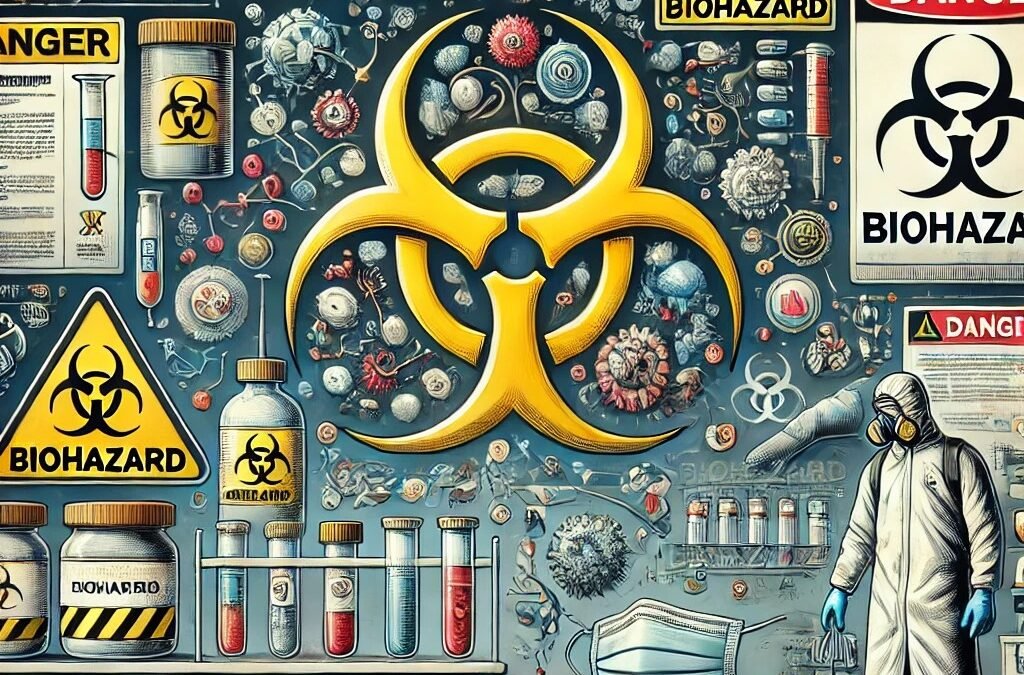What is biohazard, it often evokes images of caution signs, sealed labs, and scientists in protective gear. But what exactly is a biohazard, and why is it important to understand this concept? In a world increasingly concerned with health, safety, and environmental protection, knowing about biohazards is crucial. This article explores what a biohazard is, the different types, and the safety measures necessary to handle these dangerous materials.
What is biohazard
A biohazard, short for “biological hazard,” refers to any biological substance that poses a threat to the health of living organisms, primarily humans. These substances can be found in various forms, including bacteria, viruses, toxins, and other harmful microorganisms. The potential risks associated with biohazards make them a major concern in medical, laboratory, industrial, and environmental settings.
Biohazards can be found almost anywhere, from healthcare facilities and research labs to natural environments. They may arise from medical waste, laboratory samples, animal waste, or even improperly disposed food. The importance of proper biohazard management and safety protocols cannot be overstated, as exposure to these materials can lead to severe health problems, environmental contamination, and even outbreaks of infectious diseases.
Types of Biohazards
Understanding the different types of biohazards is essential for identifying risks and implementing appropriate safety measures. Biohazards are classified into four main categories based on the potential harm they can cause:
Microbiological Hazards
These include harmful microorganisms such as bacteria, viruses, fungi, and parasites. Examples of microbiological biohazards are pathogens like Salmonella, Escherichia coli (E. coli), HIV, and the influenza virus. These organisms can cause diseases that range from mild to life-threatening. In healthcare settings, proper sterilization, disinfection, and protective measures are vital to prevent the spread of these infectious agents.
Biological Toxins
Toxins produced by microorganisms, plants, or animals also fall under the biohazard category. Examples include botulinum toxin (produced by Clostridium botulinum bacteria), snake venom, and ricin. Unlike infectious agents, these toxins do not replicate within the host. However, they can still cause significant harm through poisoning or other toxic effects. Handling toxins requires specialized knowledge and equipment to prevent accidental exposure.
Medical Waste
Medical or clinical waste includes items contaminated with body fluids, blood, tissues, or other biological substances. Examples include used syringes, bandages, surgical instruments, and even human tissue samples. Improper disposal of medical waste poses a biohazard risk, as it can transmit infections to healthcare workers, waste handlers, and the general public. Hospitals and medical facilities must follow strict regulations for the disposal of medical waste to minimize the associated health risks.
Animal Waste and Zoonotic Pathogens
Animals can be carriers of diseases that can transmit to humans, known as zoonotic diseases. Animal waste, carcasses, and fluids can harbor pathogens like Salmonella, rabies, and avian flu. Individuals working in agriculture, veterinary services, or wildlife management must use protective measures to prevent cross-species transmission and ensure safe handling of animal-derived biohazards.
Biohazard Safety Levels
Biohazards are further classified into four biosafety levels (BSL) depending on the risk they pose:
- BSL-1: Includes low-risk agents that pose minimal threat to healthy individuals. Basic safety precautions, such as handwashing and surface disinfection, are typically sufficient.
- BSL-2: Includes agents that pose moderate hazards, like hepatitis B and HIV. Requires additional precautions, including limited access to laboratories and use of protective equipment.
- BSL-3: Involves agents that can cause serious or potentially fatal diseases through inhalation, such as tuberculosis. These settings require specialized facilities, including controlled airflow and sealed environments.
- BSL-4: Reserved for highly dangerous pathogens with no known cure or treatment, such as the Ebola virus. BSL-4 laboratories have the highest security measures, including full-body suits, airlocks, and decontamination processes.
Importance of Proper Biohazard Management
Proper biohazard management is crucial for safeguarding public health and preventing environmental contamination. In healthcare, research, and industrial settings, the mishandling of biohazards can lead to the spread of infectious diseases, contamination of water and food sources, and exposure to harmful toxins.
Implementing strict safety protocols, such as using personal protective equipment (PPE), following proper disposal methods, and conducting regular training, are essential steps in biohazard management. For example, in healthcare facilities, waste disposal containers marked with the biohazard symbol are used to collect materials like syringes, gloves, and tissues. This not only protects medical personnel but also prevents contamination of the environment.
Biohazards represent a significant risk to both human health and the environment. By understanding what constitutes a biohazard, recognizing the types and associated risks, and implementing proper safety protocols, we can minimize exposure and prevent the potential spread of infectious agents and toxins. Proper biohazard management is not just the responsibility of healthcare professionals and scientists but also of anyone who may encounter biological materials in daily life.

